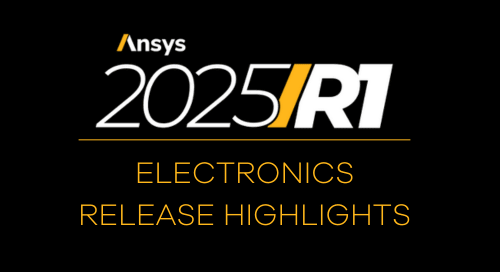The more common wireless devices become, the more their safety has been questioned. This list of devices includes microwave ovens, wireless TV remotes, and smart watches; even medical implants with radio connections to mobile phones are being placed within the human body itself. But the most commonly used wireless device, by far, is the cell phone. Cell phones have become so vital that many of us keep them nearby both day and night. Yet, how many of us keep our phone under our pillow every night and wonder if such a practice is safe, or if it is cooking our brain cells while we sleep? Let me put your mind at ease.
I decided to simulate the scenario described above using the High Frequency Structure Simulator (HFSS) in Ansys Electronics Desktop 2023. A model of a cell phone can easily be found in the example projects featured in the Electronics Desktop. I employed this model and added additional circuitry to set the resonance frequency of the cell phone antenna to 1.7GHz. 1.7GHz is one of the frequency bands for LTE used by a leading cell phone network carrier. Fig. 1 shows the gain of the field generated by the cell phone antenna. The field pattern observed is specific to the antenna model used in this example. The antenna radiation patterns and hence simulation results may differ for other antenna types in different phones.
Fig. 1. The field generated by the cell phone antenna
I then added a pillow and a human head to the simulation. A typical pillow would be between 3-6 inches thick. To err on the side of caution, the lowest typical thickness of 3 inches was used in this simulation. Polyester material was used for the pillow. A model of the human head can be found in the components library in HFSS. Each object in the model, including the pillow, was used as a component, and the component meshing was incorporated as well, so that each component could be meshed separately. This is a special feature of HFSS that reduces the simulation time of a large simulation model. The complete model is shown in fig. 2.
Fig. 2. A polyester pillow placed between the model of the human head and a cell phone antenna
According to the Federal Communication Commission (FCC), 1.6W/m² is the maximum Specific Absorption Rate (SAR) considered safe for the human body. In this simulation, an input power of 23dBm was provided to the input port of the cell phone antenna, and the average SAR calculated by HFSS was mapped onto the model of the human head (fig. 3). The maximum SAR calculated was found to be 0.5mW/m², which is well within the range considered safe. The red areas in the figure show the regions of maximum SAR, with blue indicating the parts with the lowest SAR.
Fig. 3. SAR values mapped onto a model of the human head
This made me curious about what the SAR value would be if there was no pillow and the phone was right next to the head (fig. 4). This arrangement is essentially the same as holding the phone to your ear. In repeating the simulation with these changes, one can observe that the SAR values increase. The maximum value is now 8.6mW/m2 (fig. 5), which is still within the limits of what is deemed safe.
Fig. 4. The phone is placed next to the human head.
Fig. 5. SAR values when phone is placed next to the head
So, we can now sleep peacefully knowing that the radiation from our phones is not being emitted at dangerous levels. With that being said, I would say that you would still sleep a lot better without your phone buzzing under your head all night!
Disclaimer: This article is not a medical research article, and does not include other effects of cellphone signals on the human body.
About the Author
Follow on Linkedin More Content by Unaiza Tariq









